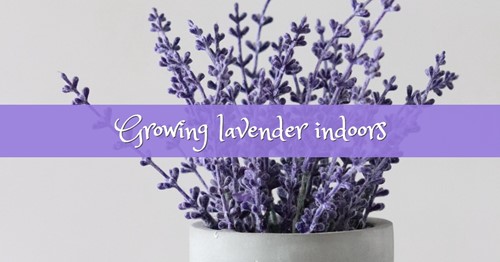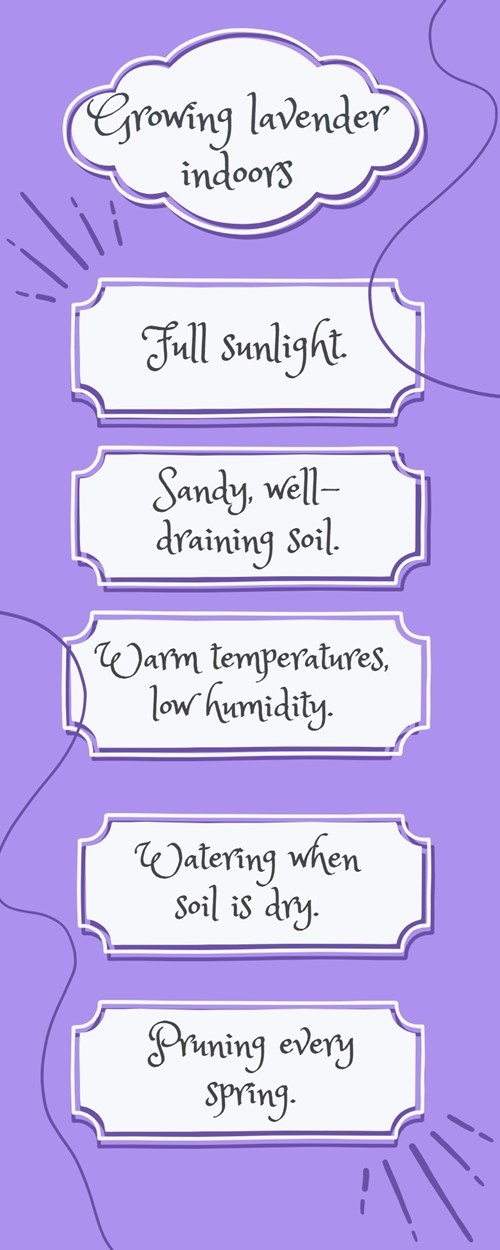
Learning how lavender grows can be your ticket to a calming and fragrant home. While lavender is frequently planted outdoors, it can also grow successfully in containers inside. If you’re interested in growing a lavender plant indoors as a houseplant, here are the most important things to know:
Growing lavender requires plenty of direct sunlight. Lavender plants thrive where they can get at least six hours of full sunlight per day. When growing lavender indoors, place your plant in front of a south-facing window. Otherwise, you may need to move the lavender around to follow the best possible sun exposure.
Lavender plants genuinely like “poor” quality soil without any organic matter. Lavender likes to have well-drained soil that’s more sandy than soft. This makes normal indoor potting mix perfectly fine for growing lavender, especially formulas meant for cacti and succulents. You can always add sand or other amendments to improve drainage.
Lavender plants typically grow best in hot, dry environments. When growing it indoors, this means you’ll want to keep it somewhere temperatures are consistently high but with plenty of airflow.
Too much humidity is more of a risk than lower temperatures, however; keep your lavender somewhere with good air circulation and out of steamy areas like bathrooms and kitchens.
Because too much moisture can cause problems for lavender plants, it’s best to water only when the soil feels dry. You can use a moisture meter to test below the surface to ensure the soil is draining properly.
The only exception to this is when the plant is brand new and first becoming established: during the first growing season, water frequently instead of letting the soil dry out too long in between.
Lavender flowers and buds will grow naturally as long as the soil is sufficiently lacking in organic matter. Adding fertilizer or compost will instead encourage the plant to focus energy on its gray green foliage and structure rather than blooms. For the best lavender flowers, prune every spring to encourage new buds to form.

If you want to plant lavender and enjoy its aromatic blooms inside your home, following these tips will help you achieve your goals. With the right balance of warmth, light and well drained soil, you can grow lavender in containers just as well as outside in your garden.

With over 18 years of experience, Jessica is licensed New Hampshire and Massachusetts. A proud member of the National Association of Realtors, Jessica values the highest code of ethics and standards expected of her. As a seller’s agent, she uses the most current market information to properly value the property. In addition, with her experience she is able to assist sellers on the best ways to improve homes so they can solicit the highest offers. Jessica works with a cutting edge marketing & social networking firm to obtain the maximum exposure for all of her listings. Known for her negotiating skills, she has a passion for working with buyers providing knowledge of what to expect & peace of mind throughout the process. In addition to what Jessica provides as a buyers agent, she works closely with a team of experts so it’s a “one stop shop” for all her buyers. In addition to her real estate career, Jessica is also a licensed loan originator in N.H. Combined with her expertise in both real estate, mortgages and finance, Jessica has a full understanding on the home buying and selling process. In today's real estate market it is so important for sellers and buyers to work with an agent who has great skill set and experience.